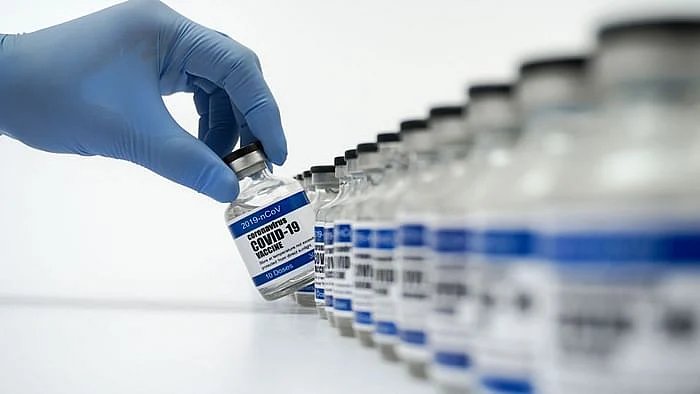What Can Cause Rare Blood Clots Post AstraZeneca Jab? New Study Reveals Clues
Dr Alan Parker, a researcher, says the new findings may provide them with an opportunity to prevent the side-effect.

advertisement
The findings of a study published in an American journal, on Wednesday, 1 December, suggest that scientists may have found the reason why the AstraZeneca and Oxford University's COVID-19 vaccine may cause an extremely rare but serious blood-clotting disorder.
This side effect, albeit rare, has proven to be deadly in a few cases (73 deaths out of nearly 50 million doses administered in the United Kingdom, as per The Washington Post). It is also reported why the United States has not yet given its authorisation to the AstraZeneca jab, even though public health experts have stressed that the benefits of the vaccine far outweighed any risks.
But Professor Alan Parker of Cardiff University’s School of Medicine, one of the researchers involved in the latest study, has been quoted by New York Times (NYT) as suggesting that the new findings may provide them with an opportunity to prevent the side-effect.
SO WHAT ARE THE NEW FINDINGS?
The findings, published in the journal Sciences Advances, suggest that the side-effect may be linked to the vaccine’s use of another, harmless virus — an adenovirus. This virus is used to deliver a coronavirus gene into human cells, in order to train the immune system to identify and combat the infection.
While, the shot, as pointed out by NYT, is administered into the muscle tissue, the study suggests that in case the adenovirus leaks into the bloodstream, it can bind to a protein in the blood called platelet factor 4 (PF4). The PF4, in turn, is involved in the natural clotting process.
That natural clotting process, thus, could trigger a releasee of antibodies against the protein, which would thereby cause platelets to cluster and the formation of blood clots in very rare cases.
IS THERE A WAY OUT NOW?
Dr Parker has expressed hope that the “findings can be used to better understand the rare side effects of these new vaccines — and potentially to design new and improved vaccines to turn the tide on this global pandemic.”
Further, he was quoted by NYT as saying:
Meanwhile, The Washington Post also quoted Dr Parker as pointing out: “What we have is the trigger, but there’s a lot of steps that have to happen next.”
WHAT IS ASTRAZENECA SAYING?
The Washington Post has quoted vaccine-maker AstraZeneca as saying that the “preclinical research further advances our knowledge about the potential mechanisms underlying the extremely rare condition … which is treatable for the majority of people.”
The company also however noted that the full reason behind the clotting still needs to be determined, and that the coronavirus infections were more likely to cause clotting than the vaccine.
“Although the research is not definitive, it offers interesting insights, and AstraZeneca is exploring ways to leverage these findings as part of our efforts to remove this extremely rare side effect,” the vaccine-maker added.
AstraZeneca’s own scientists had reportedly joined the research.
(With inputs from New York Times and The Washington Post.)
(At The Quint, we question everything. Play an active role in shaping our journalism by becoming a member today.)